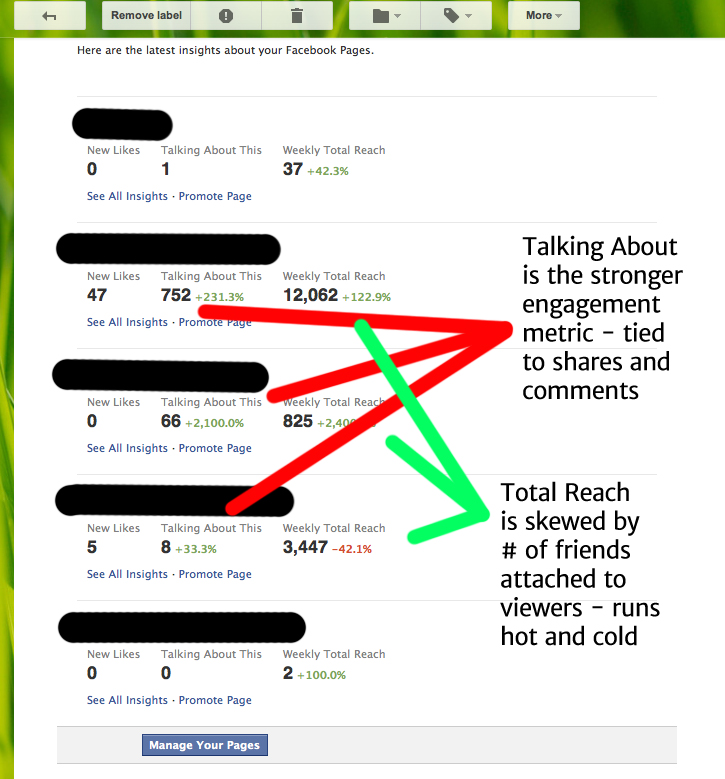More Questions That Probably Deserved Better Answers
More Questions That Probably Deserved Better Answers
Two isn’t a series but there were more questions sent my way. Answers went out. There’s something of value in here for you if you look hard enough.
Automated Email Sequences
Facebook Analytic Hint
The Quickest Survey Tool
The History of Rum
Automated Email Sequences. This one came up again. This time, in the form of a business broker. “I have all these email addresses but I have a hard time coming up with new content each month,” he said. “Automate your email sequences,” I replied.
Here’s the concept. He has a wealth of knowledge and a list of the 5 most common questions he’s asked about business valuations, what a broker does and exit strategies. On a scale of 1-10 with 1 being no understanding and 10 being perfect understanding of the value he brings to the market, some on his email list are at 7-8 and some are at a 3 or lower. Why not set up an automated sequence that drips out a series of emails helping your new contacts move from 1’s and 2’s to 6’s and 7’s over a set time period? Say, 8 months?
In the between time, your full list gets it’s normal 4-6 week newsletter. If you run a little late one month, no worries. The newer people that you’re trying to impress still get regular notes that help them understand how you work and the elders on your list don’t get pestered with content that seems repetitive. Sounds simple, right?
You do it with double-opt-in campaigns and “auto-responders”. To borrow a trademakred phrase, then you set it and forget it.
At some point I’ll go deeper into the mechanics, like how to build such a campaign in Mailchimp.
Facebook Analytics. This one came from a report that a vendor submits to a client each month. There’s a stat the Facebook loves to tout in its ad reach called Total Reach. The stat shows some awesome numbers, like “364,000” for monthly total reach. Their question to me was, “these numbers are big, so why am I not seeing any results from them? After 6 months you’d think we would see something, right?”
I won’t rant about the effectiveness of Social Media here and I didn’t to the client. Attribution is always going to be a problem. . . but I did agree, if the Total Reach number is that large, we should see something happening. Here is one of those reports I get each week on some Facebook Fan Pages (or whatever they’re called these days)
That Total Reach number for one of my pages is always substantial. Not so the Talking About This number. In the second to last stat group on the page, you can see the discrepancy between TAT and WTR. My client’s page was similar in setup. Tracking the TAT number showed a much more realistic view of what was happening in the business. Digging deeper, that Weekly Total Reach number seems to have a direct correlation with the number of friends your fans have. Pages with audiences that skew younger, with audiences that traditionally have more friends on FB (my teenager has 1,500 “friends”) show a greater reach.
While that may help in determining some sort of potential, it’s hard to tie to results. Stick with the TAT. It’s something you can work with.
The Quickest Survey Tool. This one wasn’t so much a “question” as a realization that came from necessity. Without subscribing to a tool, how could we embed an easy survey into a site and collect more than 100 responses without too much trouble?
Enter Google Docs. Sure it’s a bit spooky to see yourself through Google’s eyes (see Google Dashboard and this WSJ article: Google’s Data-Trove Dance) but I traded some more of my privacy and used Google Forms, tied it to a Google Spreadsheet and shared it with anyone that had “the link”.
12 minutes. Done.
Because I’m offering up cream puff advice at this point, I have one more for you.
A History of Rum. From our friends at Mental Floss:
Rum isn’t just the preferred drink of pirates: For more than 300 years, the booze was also part of the daily rations of sailors in Britain’s Royal Navy.
The tradition began in the 17th century, when ships traded out daily rations of beer — which tended to spoil on long journeys — for the spirit. Later, the booze was spiked with lemon juice to help prevent scurvy. Until 1740, the daily ration was half a pint of rum, but in 1850, the amount was set at a tot, 70 milliliters of rum (or an eighth of a pint) distributed at midday. Junior sailors had their share watered down with water, while higher-ups took theirs neat.
The British Royal Navy ended its daily rum rations on July 31, 1970, citing concern that sailors who took a swig at lunch would be less capable when operating ship machinery. Sailors called it “Black Tot Day,” marking the occasion by wearing black armbands and burying their tots at sea. And at the Royal Naval Dockyard in Chatham, Kent, cook Thomas McKenzie (above) drank the last drop of rum on his ship directly from the barrel.
Happy National Rum Day! You can celebrate by reading up on rum’s origins and history, making yourself a cocktail, andlearning a few things you didn’t know about rum and your other favorite liquors. Cheers!
Good stuff.
About the Author: Greg Chambers is Chambers Pivot Industries. Get more business development ideas from Greg on Twitter.


